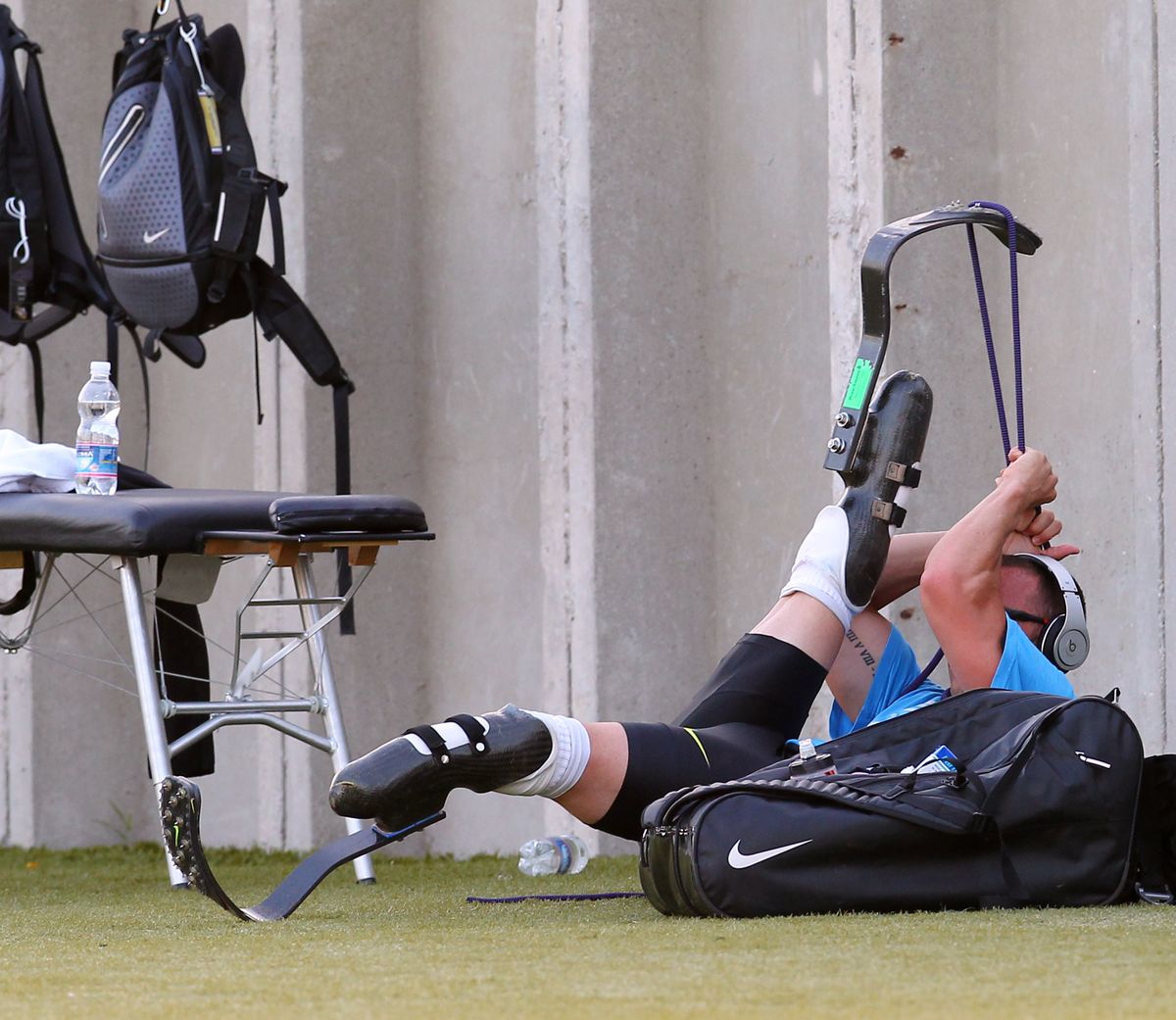Pistorius prepares for his time in the spotlight

GEMONA, Italy – Even when he’s looking at photos of his bleeding and blistered leg stumps, Oscar Pistorius smiles.
And with his Olympic debut approaching, it’s easy to understand why.
Pistorius, whose legs were amputated below the knee when he was a baby, is set to make history by running – yes, running – in the London Olympics. He will be the first double-amputee athlete to compete at the Olympics, and his journey has been long and rife with hurdles.
When he finally got word earlier this month that he had a place on South Africa’s team – his was the last name of 125 penciled in – his first reaction was relief. Then came utter joy.
“I think I woke up the next morning with cramps in my cheeks. I was smiling in my sleep,” Pistorius said during a recent interview at his training base in northeastern Italy. “You also realize very quickly … it’s the London Olympics and I need to perform. Very stressful.
“You’ve made the entrance to write the test, but now the test is in front of you.”
The test comes Aug. 4, the opening day of the 400-meter heats.
The “Blade Runner,” as he is known, runs with carbon-fiber blades that often cause blisters and rub his stumps raw. Pistorius was born without fibula bones because of a congenital defect, and lost his legs at 11 months. It never stopped him from playing sports – even rugby – with prosthetics.
But his running prosthetics led to years of controversy. Already a Paralympic gold medalist, Pistorius was initially banned from competing against able-bodied peers because many argued that his blades gave him an unfair advantage.
In 2008, however, the Court of Arbitration for Sport cleared him to compete. Last year, he ran on South Africa’s 4x400 relay team at the 2011 world championships, and though he sat out the final, he won a silver medal because he competed in the heats.
Pistorius is aware that not everyone is convinced he should compete at all.
“There will always be people who will debate, and there will always be a journalist willing to write an opinion and a certain angle to a story,” Pistorius said. “There will always be someone who wants to create a name for himself, and if he’s given that platform he’ll take it and argue that wet is dry and green is red. There are always those types of people.
“One of the reasons for doing the tests was proving that I’m in a sport and have the ability to run due to my own talent and hard work and sacrifices, and that was important for me. Looking back at that, I’m happy that we went through it.”
American LaShawn Merritt, the defending Olympic champion in the 400, looks forward to racing against the 25-year-old Pistorius.
“I’ve told him how much respect I have for him and the drive he has, to want to do something and take the action to work hard and get to where he wants to be,” Merritt said. “The dream of his was to be able to run with the able-bodied athletes, and he knew what he had to do to make that happen, time-wise, and he worked his butt off to get it. He’s here now.”
Pistorius and his team have been based in Gemona for the last two European seasons after the mayor asked him if he’d consider training there to promote the town, located near the Italian Alps, just across the mountains from Austria.
Pistorius said he needed a track, ideally with the same Mondo surface as London’s Olympic Stadium.
It was built for him.
Running lap after lap on his Cheetah Flex-Foot blades, Pistorius has focused on reaching the 400 semifinals – as he did at the worlds in South Korea last year. He’s also hoping to run the sub-45-second time that he and his coach, Ampie Louw, are certain he can achieve. His best time is 45.07.
“We’re going to race the heat. Oscar’s got no choice,” Louw said.
Pistorius’ track in Italy is normally sun-drenched; on a recent day, it was just drenched.
In pouring rain, Pistorius got through his routine and ran 150-meter splits. Louw whistled from the end of the home straightaway and he set off, pounding around the bend and down the track. Water splashed out from under his blades.
His agent, Peet van Zyl, said the rain is good preparation for London.
It’s in Gemona that Pistorius will put the final pieces in place for his high-profile – maybe the highest profile – debut at the Olympics.
“There’s a big difference in qualifying for the games and being at the top,” Pistorius said. “I’m going to go there to do my best and I’ll be content if I can run close to my personal best, and hopefully a personal best. I’ll go with my ‘A’ game and take my fight with me and see how well I’ll do.”
On Tuesday, Pistorius finished second, in 46.56, in the 400 at his final Olympic warm-up race in Lignano, Italy, well behind Calvin Smith of the United States in 45.52.
“My time wasn’t among the best. But I’m good physically and mentally,” Pistorius said. “I’ve used a lot of energy in these past few days, both in training and with the media because of my participation in the Olympics.”